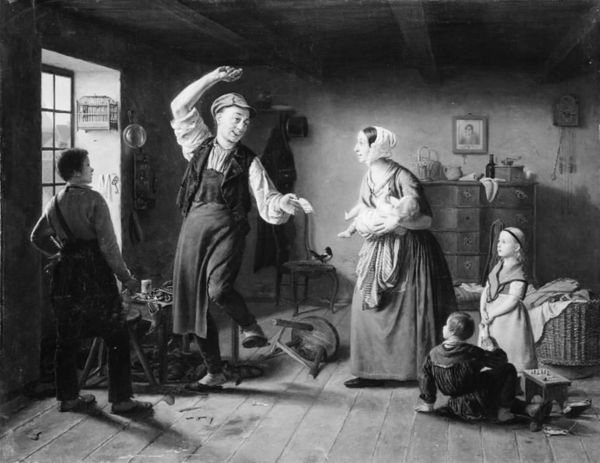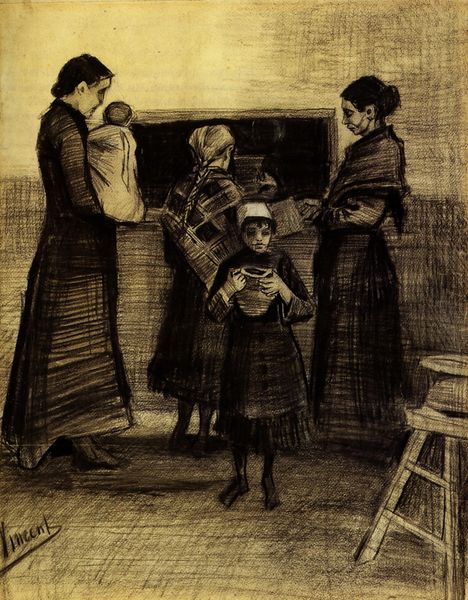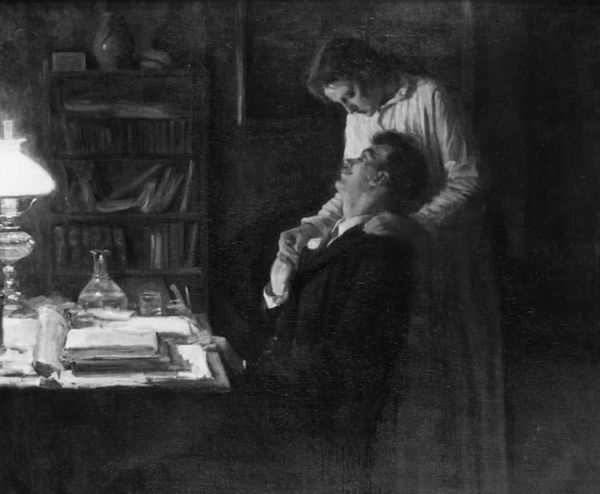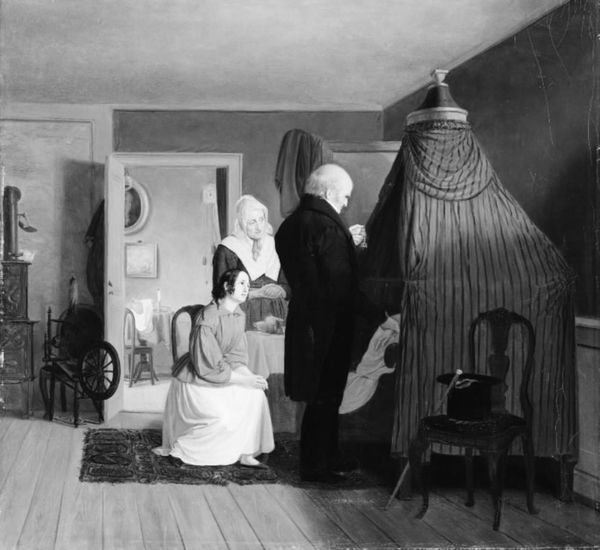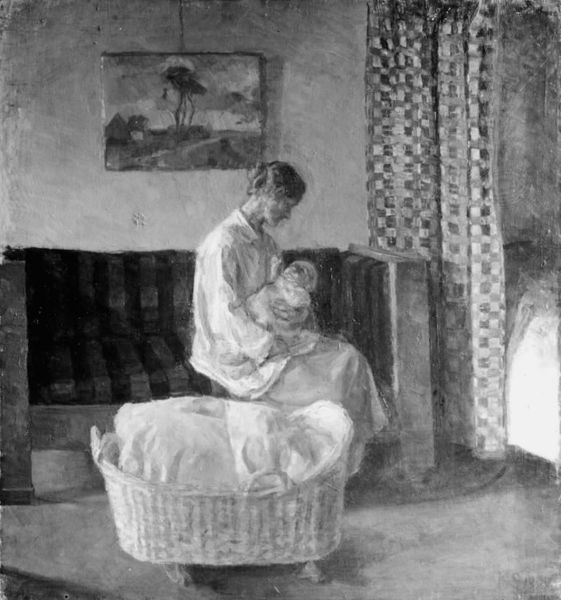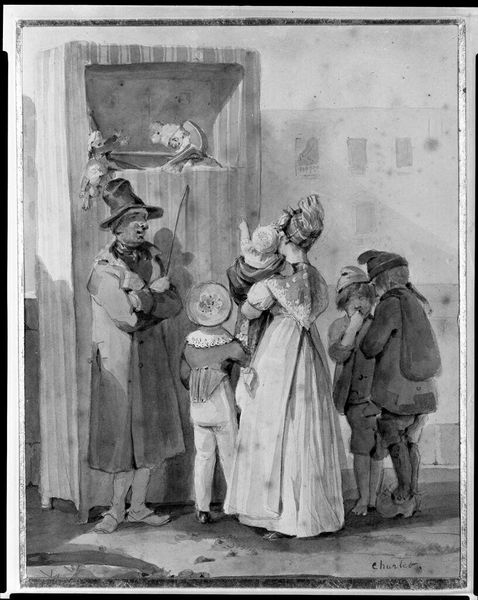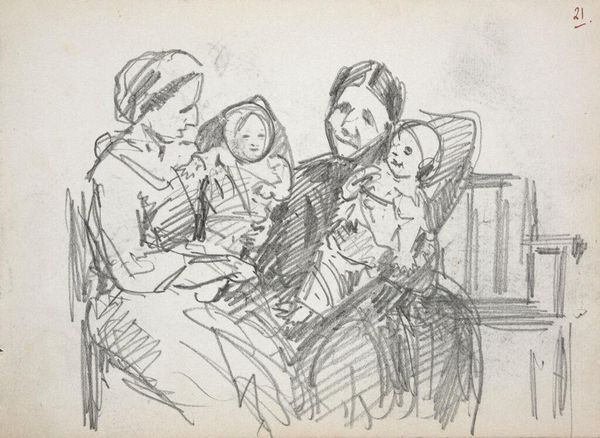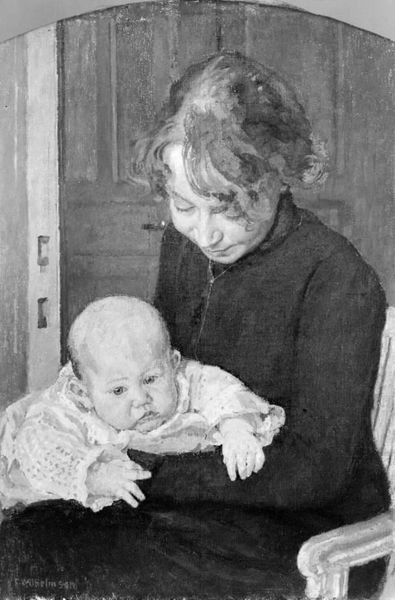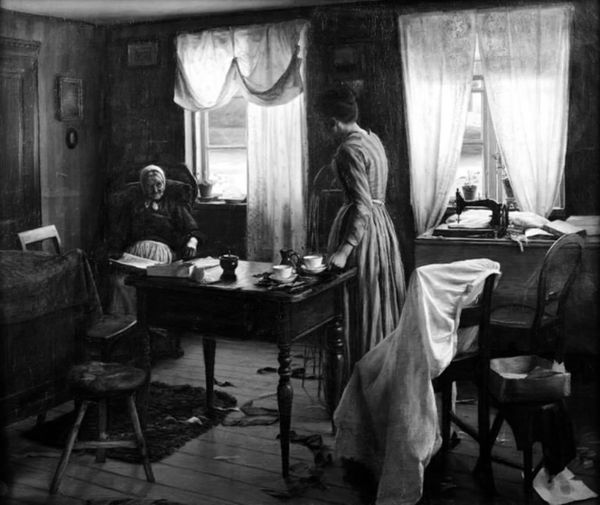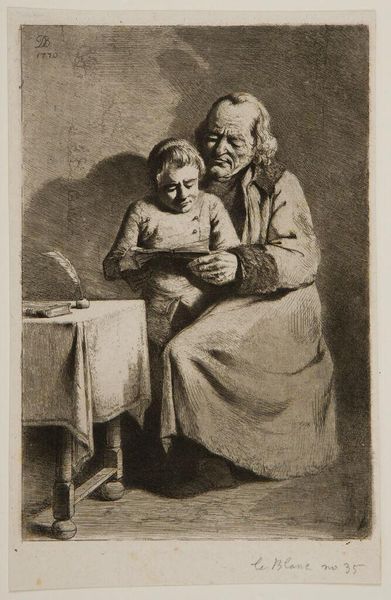
En gammel tigger ved døren får almisse af husets børn 1813 - 1829
0:00
0:00
painting
#
black and white photography
#
painting
#
romanticism
#
black and white
#
monochrome photography
#
genre-painting
#
monochrome
#
monochrome
Dimensions: 90 cm (height) x 72 cm (width) (Netto)
Curator: The title translates to "An Old Beggar at the Door Receives Alms from the Children of the House", created by August Krafft sometime between 1813 and 1829. What strikes you first about this work? Editor: It has a stark, almost unsettling contrast between the warmth of domesticity and the visible desperation of the beggar. The children appear like angels of mercy, juxtaposed against the stark reality of poverty at the doorway. Curator: Absolutely, it encapsulates Romanticism's interest in contrasting ideals. Beggars were potent symbols—vulnerability, social inequality, perhaps even spiritual testing. Note how Krafft frames the beggar in shadow, but he's placed centrally, interacting directly with the children. It disrupts any simplistic reading of charity as solely virtuous. Editor: Yes, and that disruption feels intentional. Look at the children's faces—a mix of compassion and curiosity, maybe even fear? It seems Krafft uses them to mediate between the stark realities of the outside world and the sheltered existence within. The woman holding the baby almost looks away, not fully engaging. This composition makes you consider the varying responses to poverty within a single household, reflective of the society at large. How was it exhibited? Who was the target audience? Was it designed to evoke empathy, or simply reinforce social hierarchy through benevolence? Curator: Good point. In genre painting like this, symbolism served specific audiences. During the Romantic era, representations of the poor often carried coded political messages—especially regarding the perceived failures of industrialization. Krafft may be drawing on religious iconography of giving as well. Editor: And does the inclusion of a window at the left signify an opening or connection to the wider world, literally? Is it supposed to give the painting another dimension and deeper context, in a broader symbolic representation of the connection between inside and outside worlds, so to speak. Curator: That window might represent just that - literally opening up the scene from inside to outside world! Also notice that the landscape shows the sky and some buildings - what can that potentially convey to its viewers. Editor: I believe with Krafft's work, we have just barely scraped at the surface with our assumptions of its intent, in this thought provoking art. Curator: It just reveals the power of art. Each observation deepens appreciation.
Comments
No comments
Be the first to comment and join the conversation on the ultimate creative platform.
